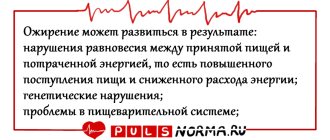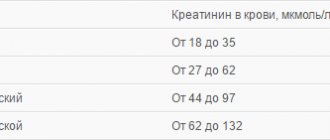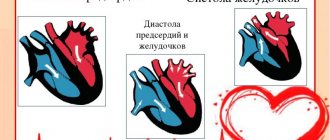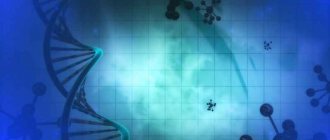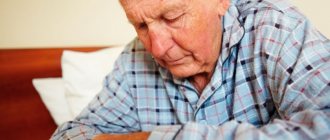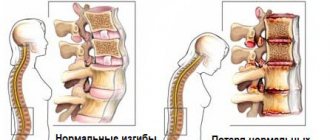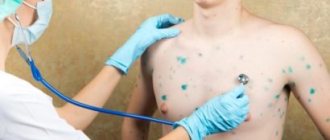The pulse is vibrations of the walls of blood vessels, which are observed due to contraction of the heart muscles. This parameter helps determine the strength and rhythm of the heartbeat, as well as assess the health of blood vessels.
Normally, the interval between pulsations should be the same. The unevenness of impacts should be regarded as signs of abnormalities in the body. It could be heart disease or another abnormality. In order to promptly identify the disease, the normal pulse rate is assessed by age in men.
Peculiarities
Pulse - (Pulsus) translated from Latin means blow, push. The frequency and force of heart contraction causes vascular vibrations. If the subject is healthy, then they are rhythmic and have the same period of time. Rhythm disturbances, weakening or increasing pulsation indicate the development of the disease. There are 3 types in total:
Arterial
It represents jerky movements of the walls of the arteries, which are formed due to periodic changes in blood filling.
Venous
This is the pulsation of the jugular (i.e., coming from the head) veins in the neck, as well as some other large ones, which are located closest to the heart. It can be examined using phlebography.
Capillary
A change in the color intensity of the nail bed, the glass-pressed lower lip and the hyperemic skin of the forehead is associated with an increase in the difference between systolic and diastolic pressure and indicates the development of pathological processes. The movement of blood in the capillaries of healthy people is continuous.
Effect of medications
A number of medications have been developed and are used to both increase and decrease heart rate. Prescriptions and dosage are made by the attending physician, taking into account the man’s condition, concomitant and chronic diseases.
The use of drugs speeds up the heart, and in cases of overdose it causes rhythm disturbances and cardiac arrest.
Some medications affect your heart rate. It can be reduced by taking antipyretic drugs, tranquilizers, and sedatives. Medicines containing caffeine will speed up the pulsation. You can read about the effect on the body and interaction with other substances in the instructions for the drug.
Men need to pay special attention to taking drugs to increase potency. They cause an immediate effect. Heart rate, blood pressure and blood flow increase sharply. Such stress on the heart can lead to an ischemic attack.
Measurement
Heart rate is most often measured at the wrist joint of each hand for 1 minute. Each blow must be of equal force and at equal intervals. If no obvious deviations are found, the procedure lasts 30 seconds. The information received is doubled. If the doctor has doubts, the time is increased to 1 minute. In this case, an additional study may be prescribed using specialized diagnostic equipment. See also: How to choose a blood pressure monitor for home use for elderly people
Daily monitoring
This method allows you to identify disorders during the waking period under the influence of various everyday household factors, as well as during sleep.
Treadmill test
Testing will help determine and evaluate changes that occur due to physical education.
What is pulse
Pulse is a jerky oscillation of the walls of blood vessels that occurs as a result of the flow of blood after it is expelled from the cardiac cavities and enters the large main and then peripheral arteries.
The nature of the pulse wave propagation and the number of its repetitions depends on the cardiac cycle, due to which, when indicators change, disorders in the human body are judged. Unlike the heart rate (HR), which reflects only the number of heart beats in one minute, the pulse shows the number of waves and impulses occurring in the arteries in the same unit of time. Pulse diagnostics are widely used in modern medicine. In addition to the traditional manual method of determination by palpation on the radial, carotid, femoral or temporal artery, a hardware examination is carried out. To do this, use a pulse oximeter, heart rate monitor or electrocardiograph, each of which helps to anticipate the number of wave oscillations per minute.
Dependence on various factors
Contraction rates between 60 and 90 beats per minute are considered normal. However, it tends to change under the influence of certain factors:
- stressful situations;
- fatigue;
- binge eating;
- hypothermia.
You also need to take into account the time of day at which the measurement occurs. For example, in the morning the pulsation is the lowest, and in the evening it reaches its maximum level. In professional athletes, the parameters at rest often drop lower. This is due to the fact that when performing habitual physical exercises, the heart pumps a larger volume of blood and works much more intensely.
The difference by gender is insignificant - 5-7 beats/min. But during the period of hormonal changes, deviations may occur. Tachycardia is often observed during menopause in women (50-60 years old), during pregnancy, and also during cyclical changes. A much larger difference is observed when divided by age:
- significant excess is allowed in infants. This is due to rapid development;
- teenagers and young adults are subject to stress and anxiety. Tachycardia manifests itself most clearly in high school;
- in old people, indicators of 80-100 are recorded even during the rest period. This is due to wear and tear on the body. Even with little activity, the reaction is more pronounced than others.
Deviations from the norm
In healthy people, resting heart rate should remain within normal limits. The heartbeat can slow down or speed up depending on various factors. All of them are divided into 2 broad categories - physiological and pathological.
The first group of factors has a temporary effect and poses average health risks. If physiological characteristics influence the pulse, it should return to normal within 25-45 minutes.
These factors include any load - running, fast walking, exercise, etc. The pulse is also affected by the process of digesting food, drinking coffee and energy drinks. Alcohol and smoking have a negative effect.
Various pathologies affect the functioning of the heart, the condition of the walls of blood vessels and the speed of blood flow. Normal heart rhythm indicators are disrupted under the influence of such factors:
- heart attack;
- increased blood pressure during pregnancy;
- hypertensive crisis;
- pathologies of the thyroid gland;
- significant blood loss;
- use of certain medications;
- ischemic disease.
Increased heart rate
In medicine, an increase in heart rate at rest is called tachycardia. In this case, the indicator can be 100-110 beats per minute. This condition cannot be considered an independent violation.
It is one of the symptoms that indicates infection, the influence of toxins, and disturbances in the functioning of the heart. It is also worth undergoing examination for malignant formations in the body. Sometimes tachycardia is a consequence of a stressful situation or shock.
Frequent heart contractions can lead to abnormalities in the functioning of the organ. This disorder can also result in problems in brain functioning. As a result, there is a risk of low blood pressure. If tachycardia occurs, you should consult a cardiologist.
Decreased heart rate
Low heart rate parameters are called bradycardia. In this case, the rate in men is 60 beats per minute or even less. Bradycardia can be functional or pathological.
In the first case, the heart rate decreases at a specific time of day - for example, during sleep. This condition may also be evidence of certain disorders in which there is insufficient blood supply to tissues. In such a situation, you cannot do without consulting a doctor. If this is not done, there is a possibility of a heart attack and other dangerous complications.
Symptoms of deviations
In people who have complex disorders, tachycardia can lead to serious deterioration of the condition. This is why it is so important to monitor your condition and monitor for new symptoms. The appearance of tachycardia is observed with anemia and severe blood loss. This is also common for pregnant women and women who have heavy periods.
Overwork, stressful situations, and exposure to high temperatures lead to increased heart rate. The main symptoms of the disorder include the following:
- shortness of breath during exercise – it occurs even with moderate activity;
- increased anxiety – often there is a fear of an unexpected death;
- dizziness – observed when there is a lack of oxygen in the brain tissues;
- pain in the heart.
Moderate bradycardia does not lead to serious consequences and is considered normal. If the pulse of a healthy man aged 30-40 years is 40 beats per minute or less, this provokes unpleasant manifestations. These include the following:
- general fatigue;
- dizziness;
- breathing problems;
- confusion;
- pain in the chest area.
Important: If you ignore such manifestations, there is a risk of loss of consciousness. In addition, there is a possibility of seizures. In the absence of adequate and timely assistance, a person may stop breathing.
Normal heart rate for an adult: table
The most obvious differences can be seen by age.
| Age | minimum and maximum quantity (bpm) | Average value (bpm) |
| Newborns up to 3-4 weeks | 115-165 | 135 |
| from 1 month up to 1 year | 105-160 | 130 |
| 1-3 | 90-150 | 122 |
| 3-5 | 85-135 | 110 |
| 5-7 | 80-120 | 100 |
| 7-9 | 72-112 | 92 |
| 9-11 | 65-105 | 85 |
| 11-15 | 58-97 | 77 |
| 15-50 | 60-80 | 70 |
| 50-70 | 66-87 | 76 |
| over 70 | 72-92 | 81 |
Heart rate while walking
When walking, the pulsation may increase. The maximum value depends only on the readiness of the torso. Physical inactivity and a sedentary lifestyle cause the indicator to reach maximum levels (120 beats/min), and among those who like to walk, the value rarely exceeds 100.
To determine the maximum permissible deviation, you can resort to a simple arithmetic method: subtract your age from 180.
15 years – 165
In adolescents, the body is ready to take on significant loads. Light running and walking train and help increase endurance. At the same time, you cannot ignore how you feel after performing even minimal exercise.
35 years - 145
The body reaches its peak of development. With a healthy lifestyle, a person does not notice an increase in heart rate after a short walk. If the indicator reaches the maximum allowable level, you should adjust your lifestyle and set aside time every day for minimal exercise.
55 years -125
For a group of people approaching retirement age, it is necessary to balance opportunities and activity. Serious failures can provoke many deviations.
75 years - 105
Elderly people need to take special care of their health. Failures in the rhythm of the pulse in old people and exceeding the maximum permissible limit can provoke complex cardiovascular diseases, including death.
Where is the best place to measure your pulse?
The most convenient place for measuring the pulse is the wrist, on which the radial artery is located. You need to place your index and middle finger on this artery. You cannot apply other fingers, because it is easy to confuse the pulsations of their vessels with contractions of the artery on the wrist.
There are some objective reasons for high heart rate in men, which can distort the correct indicators characteristic of a particular person. So, you cannot measure your pulse:
- for infectious diseases and high body temperature;
- after active sports and other physical activities;
- when taking medications;
- after bath procedures, visiting a sauna and a hot shower;
- during alcohol intoxication;
- after sexual intercourse;
- after prolonged exposure to high or low temperatures;
- on a full stomach.
Heart rate at rest
It is better to measure your heart rate when you are calm. For this, it is preferable to choose a time before noon. Before taking measurements, it is recommended to take a comfortable position and rest for 10-15 minutes.
Adults – 60-80
This age category includes the working-age population from 16 to 55 years old.
Old – 70-90
Heart activity is observed among old people over 56 years of age. It is caused by many concomitant diseases. The normal pulse in older women may deviate slightly from the generally accepted norm in medicine due to hormonal changes, which include menopause and menopause.
Teenagers - 70-80
This group typically includes female and male representatives under the age of 15. Moreover, a rather sharp drop in maximum values compared to younger groups is explained by high requirements in schools and colleges, as well as upcoming exams.
Children under 2 years old - 90-100
After the child adapts to new living conditions, the phase of active growth and development begins. The small heart performs a colossal amount of work, supplying all internal organs with nutrients that the blood carries.
Newborns - 130-140
Rapid heartbeat still begins in the womb. The fastest is observed immediately after birth. This fact is often explained by getting used to the world around us.
Ruffier's test for assessing pulse
Assessment of heart function is carried out not only by simply calculating the frequency during exercise and at rest of the heartbeat and comparing the obtained result with the norm.
To more accurately determine the state of myocardial contractility, a functional test according to Rufier with three types of measurements is used.
The first (indicator A) is recorded in a horizontal position and sitting. Then he must squat 30 times in 45 seconds, after which the measurement is taken again (indicator B). After 60 seconds, the pulse is measured again and recorded as indicator C. The calculation is carried out using the formula (A+B+C-200):10.
The result is evaluated as follows:
- excellent indicates impeccable health and good fitness – 0;
- good –1-5;
- satisfactory for middle-aged people is considered the norm – 6-10;
- unsatisfactory indicates initial signs of pathology – 11-15;
- extremely unsatisfactory - 15 or more indicates a serious illness.
If the calculation is carried out in order to find out what the pulse of an adult man should be at the age of 25-55, then when a result is obtained using the given formula from 0 to 5, we can say that his heart is working well.
With data from 6 to 10, additional research is required. And numbers from 11 to 15 or more will indicate heart failure.
Thus, in order to calculate what the heart rate should be for a healthy person at 40 years old in a man, you should determine his heart rate at rest (A), immediately after exercise (B), then a minute later (C) and add up the data obtained.
Then subtract the number 200 from this amount, and divide the final value by 10. For a trained person, the result will be good or excellent, for a man who does not engage in sports, but is healthy, the result will be satisfactory. If there is a disease - unsatisfactory.
An extremely unsatisfactory outcome is usually accompanied by severe symptoms (swelling, rhythm disturbances, shortness of breath).
Heart rate while running
When jogging, the heart muscle works much more intensely. This factor significantly influences the increase in the number of strokes. People seeking to lose weight should adhere to the maximum permissible levels. To calculate, you need to subtract age from 200. If the main goal is strengthening, then the maximum indicator should increase by approximately 60-70%.
In this case, special attention must be paid to blood pressure. It must remain unchanged. Old people should pay special attention to this point, because the body may not be able to withstand unusual heavy loads.
During pregnancy
In pregnant women, starting from 20-22 weeks, an increase in heart rate is recorded. This is due to the increased volume of circulating blood. Often changes do not go beyond the maximum permissible limits. For example, at 3-5 months the number of strokes increases by 10-15, then until the 8th month it reaches maximum levels. By the time pregnancy is completed, it will stabilize.
Tachycardia
The increase occurs for various reasons. Therefore, it is customary to divide diseases into pathological and physiologically caused. In the first case, the examining doctor reveals some serious violations:
- cardiac ischemia;
- increased blood pressure;
- pathological mental disorders;
- oncology;
- malformations of the cardiovascular system;
- infectious diseases;
- unstable functioning of the thyroid gland;
- anemia.
Leave a request for selection of a boarding house
for an elderly person
Painful sensations
Our torso, trying to overcome pain, increases the release of endorphins into the blood. They affect the fall in blood pressure, lead to an inhibited reaction and some lethargy. In response to such a reaction, tachycardia develops, which is accompanied by an insufficient volume of blood supply and a weakening of the pulse (in a pathological condition, even thread-like).
Physical and mental overload;
Unusual loads can lead to arrhythmia. At the same time, we cannot talk only about the body’s readiness to perform certain exercises. Hard intellectual work can also affect the deterioration of well-being.
Taking medications
Some drugs help increase the number of rhythmic contractions. As a rule, this factor is described in the side effects column. If the patient notices them, he is recommended to contact his doctor to review his medications.
Stress
Attacks of tachycardia, for which you may not rush to see a doctor, occur against a background of fear, fright or nervous tension. As a rule, the rhythm resumes within a few minutes after the unpleasant incident.
Hot weather
The heat outside and visiting a bathhouse/sauna also have an effect. The body reacts negatively to a sharp rise in temperature. In healthy people it is less obvious. Blood vessels dilate and blood pressure drops. These 2 factors make the “motor” work to the limit of its capabilities. In addition, at high temperatures, a fairly large volume of fluid is lost and dehydration occurs. Disturbances in the water-salt balance can be avoided by drinking mineral water enriched with potassium and magnesium.
Bad habits
Under these terms, a picture of alcoholic beverages, tobacco products and narcotic psychotropic substances is clearly formed in the human mind. The Ministry of Health has been talking about their dangers for many recent decades. They have a detrimental effect not only on the functioning of the cardiovascular system, but also wear out the body as a whole: alcohol dilates blood vessels, and smoking prevents the enrichment of cells with oxygen. To ensure vital functions and purification, a larger volume of blood is pumped, which causes failures.
However, this section should also include food addictions. Fried, smoked, salty foods, flour and sweets also have a detrimental effect on health.
Drinking coffee and energy drinks
Energy carbonated drinks and invigorating coffee in the morning give a real jolt. The main active ingredient is caffeine, which increases the amount of calcium and makes the whole body work literally for wear and tear.
conclusions
By counting the pulse and heart rate, one can judge the functioning of the cardiovascular system, the body’s adaptation to the influence of provoking factors in the form of physical and psycho-emotional stress, and the state of health in general. Currently, pulse oscillations are measured both by palpation (by touch) and using special devices. The normal pulse of a person is assessed by year, taking into account constitution and gender. If abnormalities, tachycardia or bradycardia are detected, additional examination by a general practitioner or cardiologist is indicated.
Features of bradycardia
This condition is characterized by a decrease in contraction frequency to 55 beats/min or less. Physiologically determined causes are not dangerous and stabilization occurs independently:
- While we sleep, the temperature drops, metabolic processes slow down. Deviation within 10% is considered acceptable;
- stimulation of reflex zones, namely the eyeballs or carotid artery;
- walking in frosty weather affects the fact that the body is rebuilt to protect itself from unfavorable natural conditions, conserving its resources;
- for athletes, 40-45 beats/min is the norm. This fact is due to the fact that the heart gets used to heavy loads.
Inflammatory processes in the cardiovascular system
Myocarditis is an inflammation of the heart muscle that occurs due to various infections, medications, toxins, or immune processes that lead to cell damage. This can be both the root cause and the consequence of arrhythmia.
Myocardial infarction
Tissue scarring, degenerative and fibrotic changes in the sinus node cause disruption of impulse conduction, which leads to the development of sinus bradyarrhythmia. That is, the beats are rare, but the rhythm is maintained. A severe degree of damage is characterized by failure of the automatic function.
Taking antihypertensive medications
The most common group of medications intended to lower blood pressure are diuretics. The second is ACE inhibitors (angiotensin-converting enzyme). They retain potassium. This component ensures stable functioning of the cardiovascular system, but exceeding its normal concentration is harmful.
Impulse conduction disorder
Blockades that occur in the conduction system of the heart block incoming impulses. They do not reach the ventricles and reduce the pulsation rate. If the patient’s health is critical, then a pacemaker is implanted.
Hypothyroidism
A decrease in thyroid hormone levels is an indicator for receiving levothyroxine replacement therapy. If the prescription is ignored, deterioration will lead to hypothyroid coma. This is extremely dangerous. Drowsiness, disorientation are expressed, body temperature drops to 34-35 degrees. Coma is accompanied by pathological changes in the central nervous system, which disrupt the rhythm of the pulse. This condition is reversible if euthyroidism is achieved.
Hypotension
A decrease in contraction frequency is most often accompanied by an increase in blood pressure. This is explained by the activation of the compensatory mechanism. With a decrease in both indicators, weakness, malaise and general weakening of the body are felt much more clearly.
Stomach ulcer
The proximity of the cardiovascular system and gastrointestinal tract often causes many diseases. Thus, the commonality of innervation in peptic ulcers of the upper gastrointestinal tract and pathologies of the esophagus can cause arrhythmia.
High intracranial pressure
Hypertension in the cranial area occurs due to an increase in the volume of fluids that ensure normal functioning of the brain, namely cerebrospinal fluid, blood, tissue fluid caused by edema. Often the problem is caused by mechanical head injuries or the development of tumors.
Reducing heart rate without harm to health
Pulse and pressure
Often, deviations in pulse rates are associated with the presence of additional diseases. Before taking certain methods to normalize it, you should be confident in the condition of your body.
A very important connection between heart rate and blood pressure. An impact on one indicator may lead to a change in another. It’s worth figuring out how to normalize your well-being if you have certain problems with blood pressure.
At low pressure
If elevated pulse rates are observed with low blood pressure, it is prohibited to take medications that can have a lowering effect on blood pressure. Usually a person in this state feels panic, fear, and excitement.
To calm down, you can take Valocardin or Validol, which do not affect blood pressure. Infusions of Valerian or Motherwort are also allowed.
Sedative "Moonwort tincture"
In case of frequent attacks, it is necessary to add products to the diet that will increase blood pressure and normalize the heart pulse: the norm in men will depend on the age category:
- black currant;
- rose hip;
- honey;
- pomegranate;
- bitter chocolate.
Honey is a soothing product
You should also definitely consult a doctor who may prescribe other medications:
- Persen is a sedative drug that affects heart rate;
- Phenobarbital is a medication that has a hypnotic effect and normalizes the functioning of the nervous system.
- Valerian and Motherwort - they are classified as sedatives made from natural ingredients.
- Relanium is a tranquilizer that affects the heart rate.
TIP: Many drugs are available with a doctor's prescription.
The price of medicines varies:
Prices of drugs from different manufacturers
With high blood pressure
An increase in blood pressure that accompanies a rapid heartbeat is dangerous for a person. Frequently recurring symptoms can lead to pathologies of the brain and vascular system, which threatens stroke and heart attack.
TIP: The pulse after a myocardial infarction in men requires special attention, as it may increase. If there are noticeable deviations from the norm, you should go to the clinic: the doctor will tell you how to keep your heart rate in the normal range.
If your health worsens, you should not self-medicate; you must call a doctor at home and, before his arrival, take measures to improve your condition:
- ventilate the room to make breathing easier;
- take sedatives;
- lie down, try to calm down;
- breathe deeply, measuredly;
- apply a cold compress to the forehead;
- massage the neck and eyes while closed.
TIP: eyeball massage is carried out as follows: closing your eyes, you need to apply light pressure to them with your fingertips. This action will help reduce the number of pulse beats.
At normal pressure
Breathing exercises
If the increased heart rate is not associated with the presence of diseases, then you can usually cope without taking medications or calling a doctor. It also all depends on the reason why this change in the body was caused. Most often this occurs after intense physical activity.
To normalize your well-being, you need to stop exercising and give your body a rest:
- Take a horizontal position and drink water. Spend 30 minutes in a calm state.
- If you have difficulty breathing, remove clothing that is constricting your chest.
- If a man feels dizzy, it is necessary to gain access to fresh air.
- Apply cold to your head.
- If, after 15 minutes, cardiac function does not return to normal, it is necessary to perform breathing exercises: alternate deep inhalations and breath-holding. This manipulation has a stimulating effect on the vagus nerve.
- You can also lie face down on your stomach - this position restores breathing and heartbeat.
TIP: if a man’s pulse is more than 200 beats, you need to call an ambulance, rest until it arrives and follow the above procedures. Sometimes, by provoking vomiting, a person feels better.
What symptoms should you pay attention to?
Pathological forms pose a significant threat to health. You can avoid disastrous consequences if you start treatment on time. To do this, it is important to pay attention to even the slightest changes.
Feeling of heartbeat
Patients complain of the absence of one or more contractions, interruptions - “it beats and then doesn’t beat”, or very frequent ones, which can be described as “fluttering”. Strong pulsation can cause significant discomfort. In this case, shocks are felt not only in the arteries, but also in the veins coming from the head. Some people report hearing it.
Dizziness
Weakness, malaise, and fainting become frequent accompaniments of tachycardia and bradycardia. Such complaints are caused by a deterioration in contractility, as a result of which the body does not maintain a normal level of blood pressure.
Dyspnea
Interruptions in the respiratory system disrupt the process of enriching the blood with oxygen. If such a symptom torments the patient for a long time, then the circulatory system is depleted and leads to heart failure.
Chest pain
Chest pain and a feeling of tightness are a frequent companion to tachyarrhythmia. Patients often forget about the ailment as soon as the discomfort passes, and postpone visiting the doctor until later.
Increased pressure
Regular blood pressure monitoring helps to catch many diseases at an early stage, and in some cases, avoid them. Arrhythmia in this case is no exception. The norm for a healthy person is considered to be 12./80 mmHg. A significant deviation upward or downward not only affects your well-being, but is also a sign of rhythm disturbances.
Sense of anxiety
Panic attacks and anxiety are frequent companions of arrhythmia. At the same time, they are not only capable of knocking the “engine” out of rhythm, but are also a symptom. At the same time, the breathing rate increases, tremors appear, and palms sweat. It is important to distinguish psychosomatic disease from cardiovascular disease.
Insomnia
Sudden awakenings at night with shortness of breath, an unstable sleep-wake schedule, or an inability to get enough sleep even for a long time rarely cause anxiety in a person. Most often, these symptoms are associated with hard work, stress, or age. The body is exhausted and the heart is forced to work harder to maintain the body’s performance. If insomnia torments the patient for a long period or he detects other symptoms, this is a reason to consult a cardiologist.
Types of heart rate disorders
Deviations of the heartbeat from the norm lead to a deterioration in well-being, a feeling of persistent fatigue or anxiety. Sometimes a man endures such conditions for a long time. The first thing to do with such symptoms is to measure your blood pressure and pulse rate. Two types of violations are observed.
Tachycardia
Rapid heartbeat is provoked by physical activity, as well as hypertension, coronary artery disease, heart and myocardial disease, poisoning, viral infection, disorders in the endocrine and nervous systems.
Main features:
- rapid heartbeat;
- tightness or heaviness behind the sternum;
- dyspnea;
- dizziness and darkening of the eyes;
- noise in ears;
- insomnia or troubled, interrupted sleep.
If you notice symptoms of tachycardia, you do not need to start self-medicating, or take advice or pills from your neighbor. It is recommended that in case of severe sensations, call emergency help or consult a doctor. Appropriate treatment often needs to be started without delay.
Bradycardia
A slow heart rate leads to bradycardia. There are physiological and pathological forms. The first occurs in athletes, military personnel, working in dangerous areas, during hypothermia, deep sleep, and in the period after the end of nervous stress. These conditions usually do not require medical intervention. The second form is a consequence of neuroses, head injuries, myocardial infarction, myocarditis, cardiosclerosis, chemical poisoning, sepsis.
Symptoms of bradycardia:
- low blood pressure;
- pale skin;
- feeling of lack of fresh air;
- feeling very tired;
- in severe cases, confusion, convulsions and fainting.
A specialist can determine the nature of bradycardia, identify its reliable causes and prescribe treatment. Often the heart rate returns to normal after treatment for the condition causing the slow heart rate.
How to improve your condition: first steps
If the disruptions are physiological, then there is no reason to worry. As a rule, everything will return to normal in the next few minutes, and in the future the negative factor should be avoided. The pathological condition requires complex treatment. Depending on the violation that has occurred, the doctor will select medications and give recommendations regarding physical exercise, adherence to the daily routine and nutritional correction, namely diet.
For bradycardia, medications are prescribed that stimulate the work of the heart muscle: tablets including belladonna, natural caffeine-containing drinks or herbal preparations. For tachycardia, it is recommended to rest in a cool room and wash with water. The doctor may recommend taking an infusion of valerian internally.
